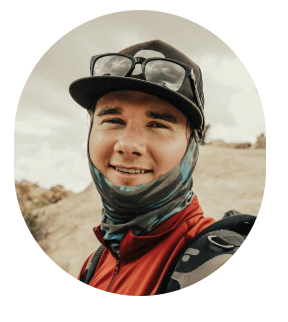
Jeff Overall
Founder, Adventurer
PolarPro
Hi Everyone, Jeff here with PolarPro wanting to share with you my favorite ND filter to use when shooting b-roll footage for my videos.

If you are not familiar with b-roll, b-roll footage is any footage used that is not the main shot. Think of it as "A" will be the main story while "B" will be the secondary supporting footage. The primary reason to use b-roll in your next video is to keep your audience engaged and elevate your story.
For example, let's say that you you are working on a project at the Grand Canyon. Using some b-roll footage of the sky and clouds passing by as you talk about your subject will give your audience something pleasing to look while indicating a time shift has occurred.
Now when it comes to equipment, you can shoot b-roll with any lens. My go to lens for my Nikon is the 85mm f/1.8, while on the Sony I prefer the G Master 24-70mm at the 70mm focal length. No matter the equipment, I want to capture a shallow depth of field and separate the subjects from the background. To do this I always shoot my b-roll in the widest aperture possible. Therefore, on the Nikon 85mm I would shoot at f/1.8 while on the Sony I would shoot at f/2.8.
I also consider slow motion video the way to go when creating b-roll footage. At 60fps or my preferred 120fps, which when at the 120fps it creates a more dramatic scene that will add an engaging element for your audience. In post I will be able to slow down the 120fps by 25% or the 60fps by 50% to create the captivating b-roll footage I am looking for.
Don't forget to keep the 180 degree rule of shutter in mind when adjusting for frame rate so that you are not overexposing your video. And as a quick reminder at 120fps, you will want 1/240th of a second or 1/120th of a second when shooting in 60fps. You will find that these settings will blow out the image and will be overexposed by about 4 stops. Not good.
This is where my go-to filter comes into play, the ND16/PL. The reason that this is the best option for b-roll footage is that you can shoot at 120fps at 1/240th with a wide open aperture (f/1.8 or f/2.8) in sunny or golden hour conditions.
No matter the changing conditions, the QuartzLine ND16/PL remains on my camera when within a +/- 1 stop range. This is because I can make quick adjustments to my iso or aperture by 1 stop which will not make a big difference in depth of field.
The added benefit of the polarizing element is the reduction of light in the sky by ~1.6 stops. This will add an increase to the dynamic range to your scenes. On top of adding the increase to the dynamic range, a reduction of glare of the water or from bright snow pack allow for a crisper, clearer video.

Thanks for reading along and watching my video on shooting b-roll and I hope that you consider including or improving your b-roll on your next project. Adding an ND16/PL into your workflow while shooting b-roll footage will allow you to achieve the dynamic, engaging content that you are looking for to support the story.



Share:
Not Normal
DJI Osmo Pocket Timelapse: Hyperlapse Vs Motionlapse (PolarPro Tutorial)